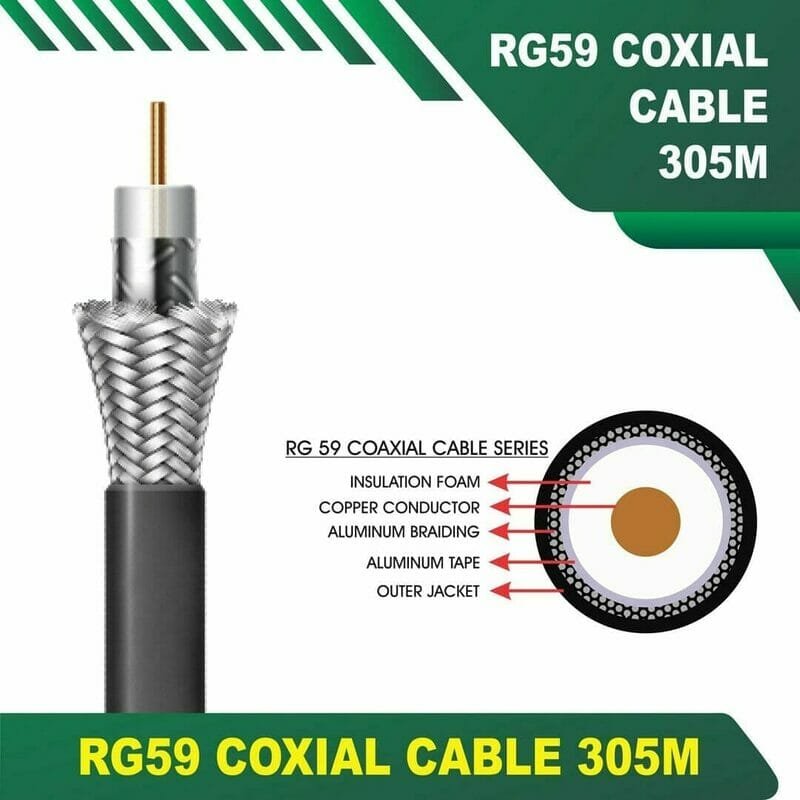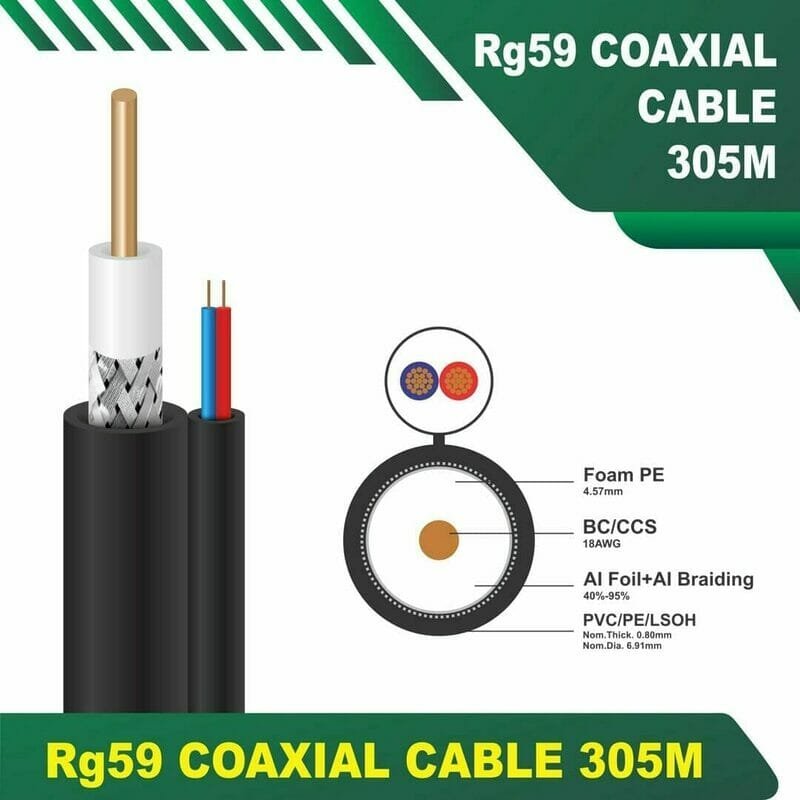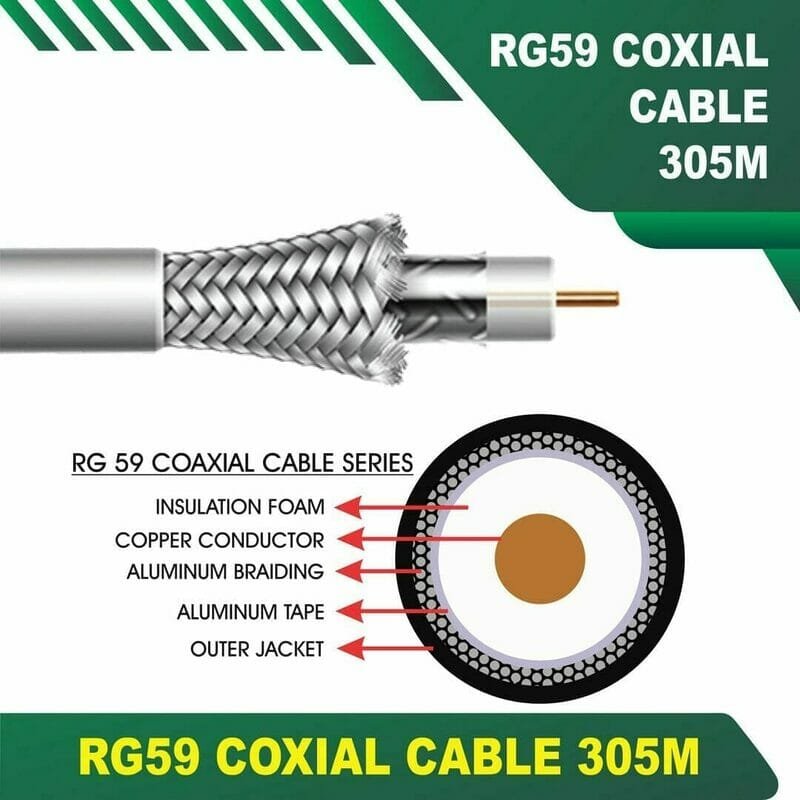Understanding Coaxial Cables: Insights from TMT Global Technology Ltd UK in oman

Introduction to Coaxial Cables
Coaxial cables are a fundamental component in various communication and transmission systems, offering a reliable solution for transmitting data, video, and audio signals. Their design is characterized by a central conductor, typically made of copper or aluminum, which is surrounded by an insulating layer coaxial vs utp known as dielectric insulation. This configuration plays a vital role in minimizing signal loss and maintaining high performance during transmission.
The inner conductor is responsible for carrying the electrical signals, while the dielectric insulation serves as a barrier that separates it from the outer conductor, effectively preventing interference from external electromagnetic forces. The outer conductor, which can be constructed from either a metal foil or braided metal mesh, acts as a shield, ensuring that the signals traveling within the inner conductor remain stable and protected from external noise.
coaxial cable vs cat6
Encasing the entire assembly is coaxial cable vs cat6 a protective jacket, typically made from materials such as PVC or polyethylene, which safeguards the internal components from physical damage and environmental factors. This structured layering is what earns coaxial cables their name, as the conductors share a common axis. Such a setup is particularly beneficial for applications that require both low attenuation and high bandwidth.coaxial cable vs cat6





In essence, coaxial cables are designed to facilitate efficient transmission over extended distances, making them ideal for use in television distribution, internet connectivity, and telecommunication systems. Their widespread applications can be attributed to their durability, flexibility, and the ability to support a multitude of protocols. Understanding the structural makeup of coaxial cables is crucial for appreciating their functionality and effectiveness in modern communication systems, a testament to their enduring relevance in a rapidly evolving technological landscape.
Understanding Ethernet Cable Color Code: Insights from Fahad Cables Industry in Oman
Understanding Ethernet Cables
Ethernet cables are essential components in modern networking, providing the physical connection for devices to communicate over local area networks (LAN). Originally developed in the 1970s, Ethernet technology has evolved significantly, enabling faster data transfer rates and improved reliability. The primary purpose of Ethernet cables is to facilitate the transmission of data between various devices such as computers, routers, switches, and printers, forming the backbone of both residential and commercial networks.
There are several types of Ethernet cables available, each designed to meet specific networking needs. The most commonly used types include Cat5e, Cat6, and Cat6a, with each subsequent category offering enhancements in speed and bandwidth capabilities. For instance, while Cat5e supports up to 1 Gbps, Cat6 can handle up to 10 Gbps over shorter distances. The choice of Ethernet cable type can greatly influence the performance of a network, making it crucial for users to select the most appropriate one based on their requirements.
In addition to the types of cables available, one key aspect of Ethernet cables is their color-coding system. This system serves as a practical guide during the installation and troubleshooting processes. Each set of color codes corresponds to specific wire pairs within the Ethernet cable, which when correctly wired ensures optimal performance and connectivity. Mis-wiring can lead to network issues, making it imperative for technicians and network installers to adhere to established standards. The significance of understanding the color code cannot be overstated, as it aids in the efficient setup and maintenance of complex networking environments.
The Importance of Color Coding in Ethernet Cables
Color coding plays a vital role in the organization and functionality of Ethernet cables, serving as a key component in ensuring seamless connectivity across network devices. The unique color combinations used in Ethernet cables, specifically in twisted pair cables, facilitate the identification of wire pairs, correlate to their specified roles, and help maintain order and efficiency in wiring installations. Adhering to the standardized color code is essential not only for the organization of the wires within the cable but also for the overall reliability and performance of the network.
The commonly accepted T568A and T568B wiring standards delineate specific color codes for the eight wires within Ethernet cables. Correctly wiring these pairs according to their designated color codes minimizes the risk of crosstalk, which occurs when signals from one pair interfere with another. This interference can lead to slower network speeds, increased error rates, and, in some cases, complete disruption of connectivity, highlighting the necessity of following the established standards diligently.
In addition to the technical advantages, color coding enhances troubleshooting efficiency. Network technicians and IT professionals can quickly identify issues when connections are made following standardized color coding. Conversely, neglecting this practice can complicate maintenance efforts, resulting in increased downtime and diminished productivity. Furthermore, correctly color-coded cables foster safety by reducing the likelihood of erroneous connections that could potentially damage network hardware. Ultimately, systematically applying the appropriate color codes is paramount for organizations and individuals looking to establish a reliable and efficient networking environment.
Overview of Ethernet Cable Color Code Standards
Ethernet cables are essential components of modern networking, facilitating data transfer between devices in a reliable manner. To ensure clarity and consistency in the assembly and installation of Ethernet cables, specific color code standards have been established. The two predominant wiring standards are T568A and T568B. Both standards define the order and purpose of colored wires within the cable, promoting compatibility in networking setups.
The T568A standard utilizes the following color coding: pin 1 is white/green, pin 2 is green, pin 3 is white/orange, pin 4 is blue, pin 5 is white/blue, pin 6 is orange, pin 7 is white/brown, and pin 8 is brown. In this configuration, the green-colored wires (pins 1 and 2) are primarily used for transmitting data. Meanwhile, the blue-colored wire (pin 4) serves a supporting role in signaling and power over Ethernet (PoE) applications. The remaining wires contribute to data reception and are crucial for maintaining optimal performance in network communication.
Conversely, the T568B standard features a different wiring order, where pin 1 is white/orange, pin 2 is orange, pin 3 is white/green, pin 4 is blue, pin 5 is white/blue, pin 6 is green, pin 7 is white/brown, and pin 8 is brown. Similar to T568A, the T568B standard emphasizes data transmission through the orange and green wires while maintaining the integrity of the remaining connections. Both T568A and T568B standards are capable of supporting high-speed data transmission, making them integral to Ethernet networking practice.
Understanding these color code standards is vital for individuals assembling or terminating Ethernet cables. Proper adherence to either T568A or T568B ensures that devices effectively communicate within the network, minimizing potential issues. By following these guidelines, users can achieve seamless connectivity and streamline their networking endeavors.
Fahad Cables Industry: A Leader in Ethernet Cable Manufacturing
Fahad Cables Industry, established in Oman, has emerged as a prominent player in the manufacturing of high-quality Ethernet cables. Since its inception, the company has made significant strides in the local and regional markets, providing a range of networking solutions tailored to meet the needs of various sectors. As technology continues to evolve, so does Fahad Cables Industry, consistently adapting its product offerings to ensure they remain at the forefront of innovation.
The company is recognized for its comprehensive range of Ethernet cables, which includes products designed for residential, commercial, and industrial applications. By prioritizing quality and efficiency, Fahad Cables ensures that its Ethernet cables meet the demands of modern networking, allowing for reliable and high-speed connectivity. Understanding the importance of Ethernet cable color coding, the company takes great care to provide clear and informative specifications, guiding customers in the installation and maintenance of their networking systems.
Quality assurance is a pivotal aspect of Fahad Cables Industry’s operations. The company adheres to stringent international standards throughout its manufacturing processes, ensuring that every cable produced is durable, efficient, and safe for use. With a rigorous testing protocol in place, each Ethernet cable undergoes extensive evaluation to confirm its performance and compliance with industry norms. This commitment to quality not only reinforces the company’s reputation but also instills confidence in customers, who rely on Fahad Cables for their networking needs.
In a competitive market, Fahad Cables Industry differentiates itself by focusing on customer satisfaction and continuous improvement. The company’s dedication to excellence in manufacturing, combined with its expertise in Ethernet cable technology, solidifies its position as a leader in the cables industry within Oman and beyond.
Types of Coaxial Cables Offered by TMT Global Technology Ltd
TMT Global Technology Ltd offers a comprehensive range of coaxial cables, each designed to meet specific needs across various applications. One of the most common types available is the RG-6 coaxial cable. This type is predominantly used in residential and commercial settings for television and internet connections. RG-6 features a thicker center conductor and improved insulation, allowing for reduced signal loss over long distances. Additionally, its effectiveness in minimizing interference makes it a preferred choice for high-frequency applications.
Another type noteworthy in TMT’s lineup is the RG-11 coaxial cable. Similar to RG-6, this cable is engineered for high-performance uses, particularly in scenarios requiring transmissions over extended distances. RG-11 has a larger diameter compared to RG-6, which contributes to its ability to maintain signal integrity over longer reaches. This type is often utilized in satellite and cable television installations, offering exceptional quality for both audio and visual signals.
TMT Global Technology Ltd also produces specialized coaxial cables tailored for telecommunication applications. These cables may include variations like the RG-59, which serves in lower frequency applications like video surveillance and CCTV systems. The construction of RG-59 includes a smaller conductor and reduced shielding but remains highly effective for short-distance transmission where minimal interference is crucial.
Additionally, TMT offers custom solutions to fulfill unique operational requirements across diverse industries. The choices extend to low-loss cables optimized for broadband internet services or heavy-duty cables designed for rugged environments. The advantage of selecting coaxial cables from TMT lies in their commitment to quality, ensuring that every product adheres to strict industry standards while delivering reliability and performance in more demanding scenarios.
Key Features and Benefits of TMT Coaxial Cables
Coaxial cables from TMT Global Technology Ltd are engineered to meet the demanding requirements of modern communication systems. One of the standout features of TMT coaxial cables is their exceptional signal integrity. The design of these cables minimizes signal loss and distortion, ensuring reliable and clear transmission of data. This quality is particularly crucial in environments where high-frequency signals are prevalent.
Bandwidth capabilities are another critical advantage offered by TMT coaxial cables. These cables are designed to support a broad range of frequencies, making them suitable for various applications, including broadband internet, cable television, and telecommunications. With a higher bandwidth, users can expect improved performance and faster speeds, which are essential in today’s data-driven landscape.
Durability is a hallmark of TMT’s coaxial cables, crafted from high-quality materials that withstand environmental stressors. This toughness ensures longevity and consistent performance, even in challenging conditions. Furthermore, the flexibility of TMT coaxial cables enhances their usability in complex installations, allowing for easy routing without compromising functionality.
Resistance to electromagnetic interference (EMI) is a significant benefit of TMT’s coaxial cable design. These cables incorporate shielding mechanisms that effectively mitigate external noise and interference, ensuring that the signal remains strong and uninterrupted. This feature is particularly beneficial in urban areas or industrial settings where various electronic devices may generate interference.
Overall, TMT Global Technology Ltd offers coaxial cables that stand out due to their superior signal integrity, extensive bandwidth capabilities, durability, flexibility, and effective resistance to EMI. These features cater exceptionally well to both consumer and industrial needs, making TMT coaxial cables a reliable choice in a competitive market.
Industry Applications of Coaxial Cables
Coaxial cables have become an integral component in various industries due to their remarkable versatility and reliability. One of the most prominent sectors that utilize coaxial cables is telecommunications. These cables facilitate efficient data transmission, allowing for seamless communication services such as voice, text, and video across long distances. TMT Global Technology Ltd supplies coaxial cables that support a broad spectrum of telecommunications applications, ensuring high bandwidth and reduced signal interference.
In the broadcasting industry, coaxial cables are vital for video and audio transmission. They are used to connect broadcast equipment to antennas or transmitters, ensuring high-quality signal delivery without degradation. TMT’s coaxial cables help broadcasters maintain superior transmission standards, enabling crystal-clear reception for audiences and contributing to the overall efficiency of broadcasting operations.
Internet service providers also rely heavily on coaxial cables for broadband connections. These cables support various network architectures, including hybrid fiber-coaxial (HFC) systems, which blend fiber and coaxial technologies to deliver high-speed internet services to consumers. TMT’s offerings in this domain fortify the backend infrastructure necessary for fast and reliable internet access, catering to an increasingly data-driven world.
The automotive industry has also embraced coaxial cables, particularly in advanced driver-assistance systems (ADAS) and infotainment systems. These applications require robust data transmission capabilities to manage sensors and onboard communication effectively. By integrating TMT’s coaxial cables into automobile design, manufacturers can enhance connectivity and user experience.
Finally, security systems, including CCTV and alarm systems, utilize coaxial cables for transmitting video signals and data. The ability of coaxial cables to handle high-frequency signals with minimal interference makes them a preferred choice in security applications. TMT Global Technology Ltd provides specialized coaxial solutions that meet the demanding requirements of the security industry.
Quality Assurance and Testing Standards
TMT Global Technology Ltd is fundamentally committed to maintaining high-quality standards in the manufacturing process of coaxial cables. This commitment is reflected not only in the materials used but also in stringent quality assurance protocols that guide every phase of production. Adhering to internationally recognized standards, the company ensures that all coaxial cables produced meet and often exceed client expectations for performance and durability.
One of the cornerstones of TMT’s quality assurance program is its alignment with ISO standards. ISO certifications serve as a testament to a company’s dedication to quality management systems. For TMT Global Technology Ltd, adhering to these standards means implementing continuous improvement measures and meticulous attention to detail throughout the production cycle. These practices significantly enhance the performance and reliability of coaxial cables, making them suitable for various applications in telecommunications, television, and internet services.
Beyond ISO certifications, TMT employs various testing methods to evaluate the integrity and functionality of their products. These tests include assessments of electrical properties, signal integrity, and physical durability. Each coaxial cable undergoes rigorous evaluations to ensure it can withstand the demands of real-world usage. This comprehensive testing process covers aspects such as tensile strength, flexibility, and resistance to environmental factors, ensuring that every product that leaves their facility is of superior quality.
Moreover, TMT Global Technology Ltd fosters a culture of accountability and transparency in their quality assurance approach. Regular audits and reviews are conducted to assess compliance with established standards, providing an additional layer of assurance that their coaxial cables are reliable and effective. This commitment to quality is a critical differentiator in the competitive landscape of cable manufacturing, reinforcing TMT’s reputation as a trusted supplier of coaxial cables.
Comparison with Competitors
In analyzing the coaxial cables manufactured by TMT Global Technology Ltd, it is essential to compare their offerings with those of other leading players in the industry. When it comes to pricing, TMT Global Technology Ltd maintains a competitive edge. Their coaxial cables are priced strategically to provide value without compromising on quality. Many alternative manufacturers often offer lower-priced options; however, these might not match the performance and durability standards set by TMT.
Performance is a critical component in evaluating coaxial cables. TMT Global Technology Ltd’s cables demonstrate superior signal clarity and reduced attenuation, often outperforming similar products from competitors. Numerous tests reveal that these cables maintain high performance even over extended distances, which can be a significant advantage in various applications such as telecommunications and broadcasting. Furthermore, customer feedback consistently highlights satisfaction with the consistency and reliability of TMT’s products, often citing fewer instances of interference compared to those from rival brands.
Durability is another important factor that sets TMT Global Technology Ltd apart from its competitors. Their coaxial cables are designed with robust materials that ensure longevity, which often leads to lower long-term costs for consumers who would otherwise have to replace inferior quality cables. Many competitors’ products, while initially enticing due to lower pricing, can lead to higher costs over time due to frequent replacements or repairs.
Overall, the combination of reasonable pricing, excellent performance, durability, and positive customer feedback contributes to TMT Global Technology Ltd’s competitive advantage in the coaxial cable market. These factors make their products a worthy investment for consumers seeking quality and reliability in their cable solutions, setting them apart in a crowded marketplace.
Customer Reviews and Case Studies
Customer feedback plays a pivotal role in evaluating the performance and reliability of coaxial cables, particularly those offered by TMT Global Technology Ltd UK. A multitude of reviews from various clients reflects a consistent satisfaction with the quality and efficiency of their coaxial cables. Users have noted significant improvements in signal clarity and stability when transitioning to TMT products, with many emphasizing how these enhancements have positively impacted their telecommunications and broadcasting projects.
In one compelling case study, a telecommunications company upgraded its infrastructure by incorporating TMT coaxial cables. They reported a dramatic reduction in signal loss, which was critical in maintaining uninterrupted service during peak usage times. This transition not only increased customer satisfaction but also reduced operational costs associated with maintenance and troubleshooting, showcasing TMT’s reputation for reliability and durability.
Similarly, a prominent media organization documented the effectiveness of TMT coaxial cables in their broadcasting environment. The organization encountered challenges with previous cable systems, including frequent disruptions and poor transmission quality. After implementing TMT’s solutions, they observed a marked increase in broadcast reliability. The client praised TMT’s customer support for their responsiveness and expertise during the implementation phase, which further solidified their confidence in the brand.
These real-world examples underscore TMT Global Technology Ltd UK’s commitment to providing high-quality coaxial cables that meet rigorous industry demands. The performance feedback coupled with strong customer service reviews illustrates how TMT has successfully positioned itself as a trusted partner in the telecommunications sector. By leveraging data-driven insights from customer experiences, TMT continues to refine its products and services, ensuring that they not only meet but exceed customer expectations.
Future Trends in Coaxial Cable Technology
As technology continues to evolve, coaxial cables are positioned to adapt and meet the increasing demands of modern communication systems. One of the primary future trends is the advancement in materials used for coaxial cable construction. The traditional copper core is being supplemented with superconductor materials, which allow for lower signal loss and the potential for greater distances without degradation. These innovations are expected to enhance performance in high-frequency applications, making coaxial cables more efficient and versatile.
Moreover, the demand for increased bandwidth is driving the development of coaxial cables that can support higher data rates. As consumer habits evolve, with an increase in streaming services, online gaming, and smart devices, the requirement for high-speed data transmission becomes imperative. Manufacturers are focusing on creating cables that can handle these bandwidth enhancements while maintaining reliability. Advanced designs are likely to result in coaxial cables that offer reduced attenuation and increased capacity, catering to the rising expectations of both consumers and businesses.
Additionally, coaxial cables are expected to find new applications in emerging technologies such as 5G, the Internet of Things (IoT), and smart home systems. The roll-out of 5G networks necessitates the use of robust cabling solutions to ensure latency is minimized and signal quality is uncompromised. Coaxial cables can serve as a crucial component in the infrastructure that supports these advanced communication networks. Furthermore, these cables can facilitate connectivity between various IoT devices and support the smart home ecosystem, delivering not only data but also power to devices seamlessly.
In conclusion, the future of coaxial cable technology appears promising, with advancements in materials, bandwidth capabilities, and diverse applications paving the way for enhanced communication systems. Adaptations to the evolving technological landscape will ensure that coaxial cables continue to play a vital role in the connectivity of the future.

